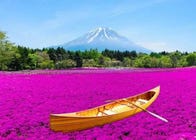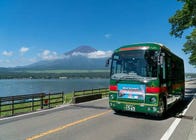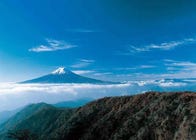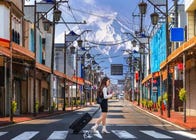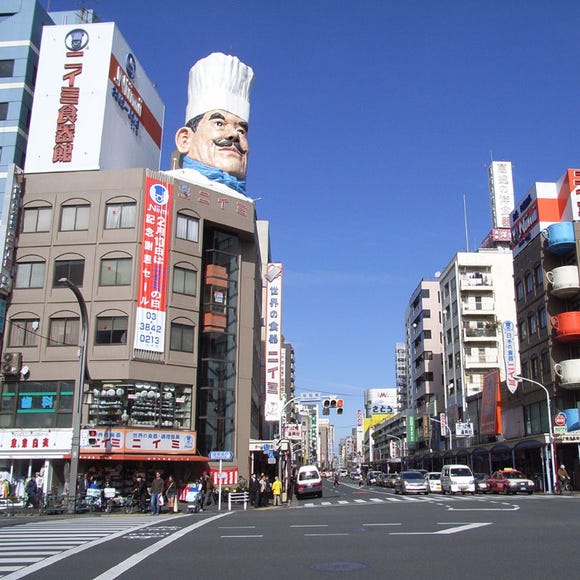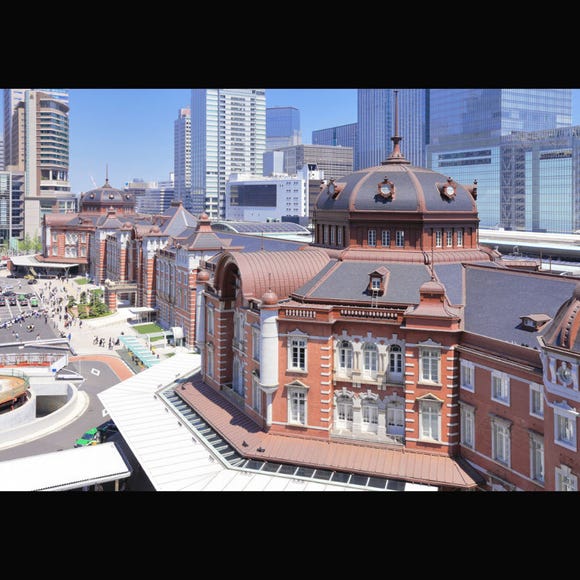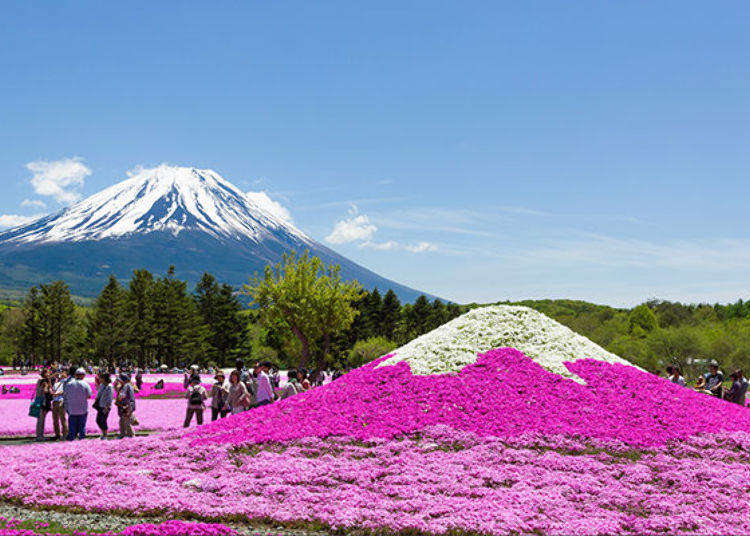
We toured the Fuji Five Lake area to find the five best spots to enjoy Mount Fuji and flowers! At each, you'll love immersing yourself in the enchanting vistas beneath a clear blue sky!
The Fuji Five Lakes is a stunningly beautiful area of five lakes that spreads all around Japan’s most iconic mountain. Because of the high altitude, spring hits the region about a month later than in Tokyo, offering a sea of flowers even until Golden Week in May, a week of consecutive holidays that puts the entire country in a mood of wanderlust.
- Table of Contents
-
- 1. Fuji Motosuko Resort: A Perfect Pink Carpet of Pink Moss Phlox (Fuji Shibazakura Festival)
- 2. Oshino Omiya Bridge: Magical Marriage of Cherry Blossoms and Mount Fuji’s Snowy Peak
- 3. Kawaguchiko Music Forest Museum: A Rose Garden Straight Out of a European Fairytale
- 4. Oishi Park & Yagizaki Park: Relax With Mt. Fuji and Lavender (Lake Kawaguchiko Herb Festival)
- 5. Yamanakako Hananomiyako Park: Gorgeous Views of Mount Fuji and a Lush Flower Garden
- Accommodations near Mt. Fuji
1. Fuji Motosuko Resort: A Perfect Pink Carpet of Pink Moss Phlox (Fuji Shibazakura Festival)
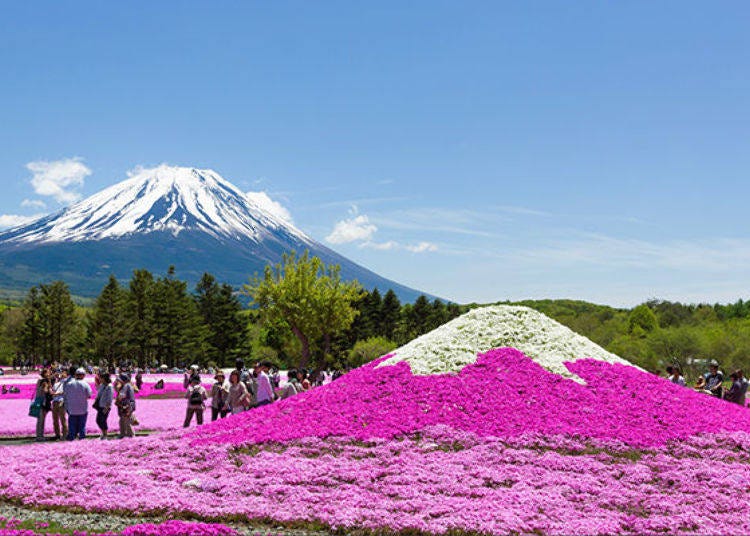
The Fuji Motosuko Resort, renowned for hosting the annual Fuji Shibazakura Festival, is the quintessential destination for flower enthusiasts and admirers of Mount Fuji. Each year, visitors can marvel at an expansive array of over ten types of vibrant flowers. This includes eight varieties of phlox alongside the Anemone and Mitsuba Azalea (Rhododendron dilatatum), all bursting into a vivid display of colors from April to May.
Early to mid-May is deemed the best time for enjoying the spectacular shibazakura flowers against the backdrop of Mt. Fuji. The intense pink hues of the flowers form a striking contrast against the clear blue sky, creating a mesmerizing floral carpet. This enchanting view was so captivating that it was highlighted by CNN as one of Japan’s top 31 sights in March 2015, celebrating its breathtaking beauty.
- In bloom: Early to mid-May
- Flowers: Moss phlox (8 varieties), Anemone, Forsythia, Japanese primrose
- Fuji Shibazakura Festival 2024 dates: 4/13 - 5/26
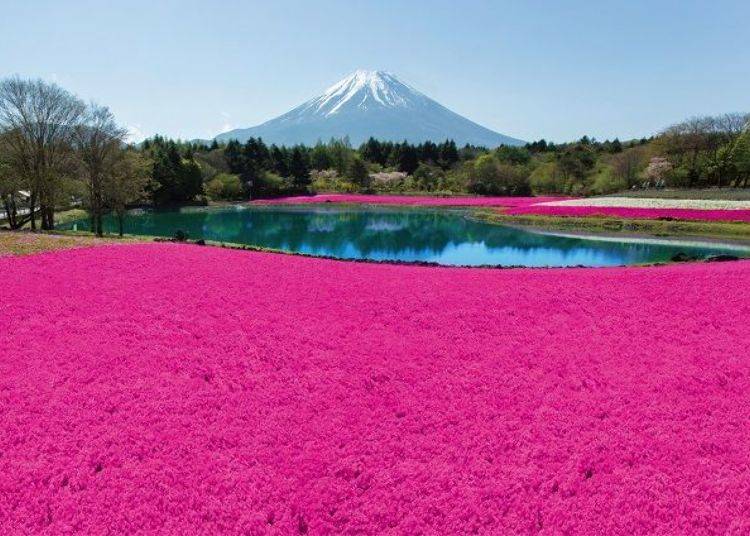
The Fuji Shibazakura Festival doesn’t only offer stunning floral sights but also treats you to a local gourmet experience with the Mt. Fuji Delicious Foods Festival.
Look forward to savoring regional specialties such as Yoshida Udon and a chicken offal dish called kōfu tori motsu-ni. On top of that, the Mt. Fuji Street Performance Festival entertains visitors in all kinds of ways (not held during Golden Week).
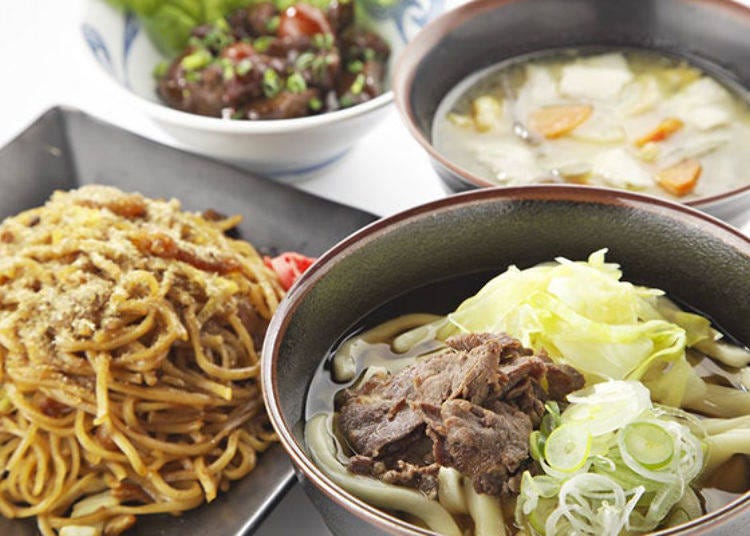
If you need a break from feasting and exploring, head to the Observatory Café for a nice cup of coffee and delicious sweets or dangle your feet into the Observatory Footbath (100 yen admission, 100 yen for towel rental, tax included), both part of the Highland Resort Hotel & Spa.
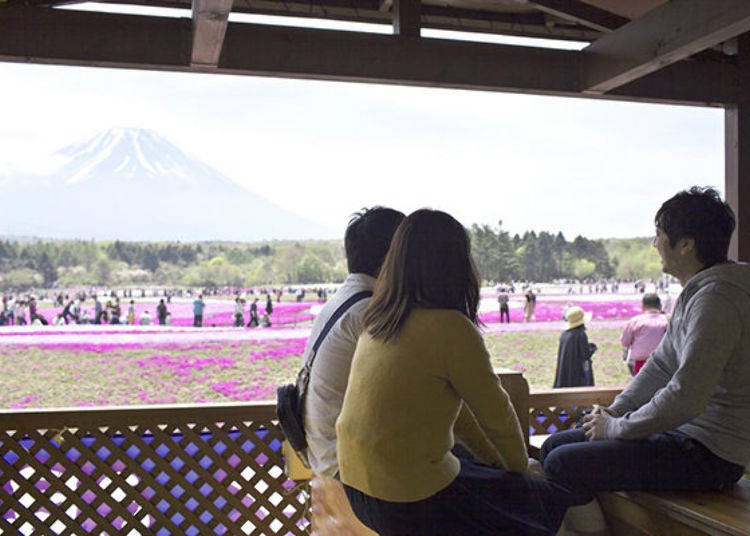
While the festival is taking place, a bus takes you to the venue from Shibuya next to several other round-trip buses, connecting various parts of Tokyo to Mount Fuji’s moss phlox paradise (reservation required). Enjoy an amazing day trip into a world full of Mount Fuji and flowers!
-
Fuji Motosuko Resort富士本栖湖リゾート
- Address 212, Motosu, Fujikawaguchiko-machi, Minamitsuru-gun, Yamanashi 401-0337
- Phone Number 0555-89-3031
・Event period: April 13 to May 26, 2024
・Hours: 8 AM – 4 PM (May change depending on the flowering; see the official website for details)
・Admission (varies on dates): Adults (junior high and above) 1,000-1,300 yen; Children (3 and older) 500-700 yen (tax included)
・Closed: Open daily during event period
2. Oshino Omiya Bridge: Magical Marriage of Cherry Blossoms and Mount Fuji’s Snowy Peak
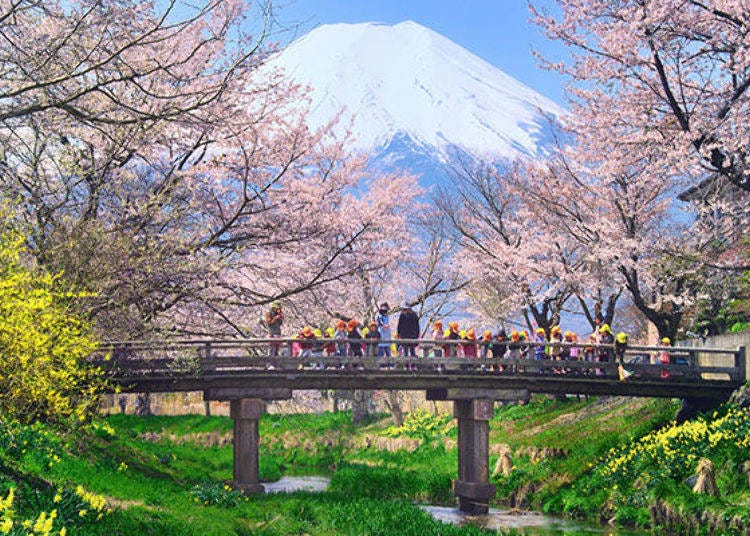
Oshino, a picturesque village nestled just northeast of Mount Fuji, sits on a plateau that offers tranquil landscapes and stunning vistas of the surrounding area. The Shinashōgawa River meanders through the village, flanked by a myriad of cherry trees that come alive with blossoms in spring.
About 100 Somei-Yoshino trees stretch their branches to the sky along both sides of the river, creating a breathtaking tableau, particularly around Omiya Bridge—a spot renowned for its scenic beauty. (The road is close by, so please be careful where you walk while taking pictures.)
The cherry trees typically reach their full bloom by the end of April, attracting numerous visitors who don rubber boots to wade into the river for a unique vantage point of the enchanting scenery. It certainly is a one-of-a-kind sight, sure to cast a spell over you!
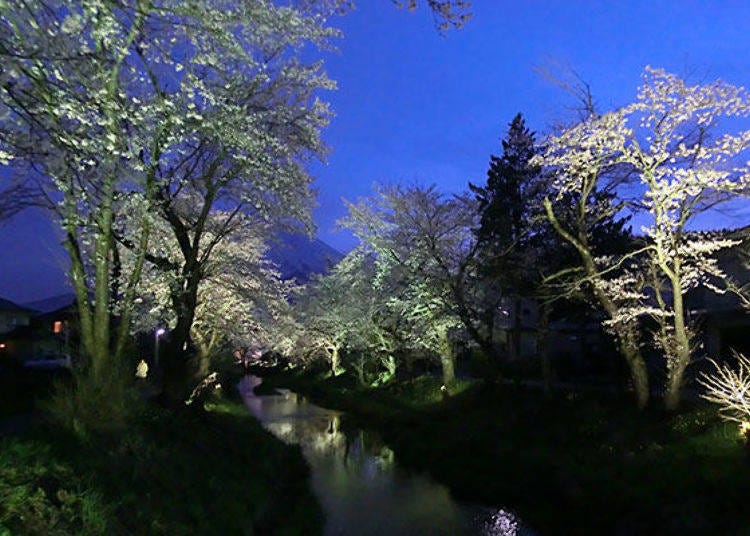
When the cherry trees start to bloom, there’ll be a light-up at night for the next ten days. While the full bloom is often around Golden Week, the status of the flowers can be checked on the official website of Oshino Village via a live camera feed.
This scenic spring spot is just a 5-minute walk away from Oshino Hakkai, a World Heritage Site that is well worth a visit in itself. Brace yourself for a breathtaking stroll dotted with stunning sights!
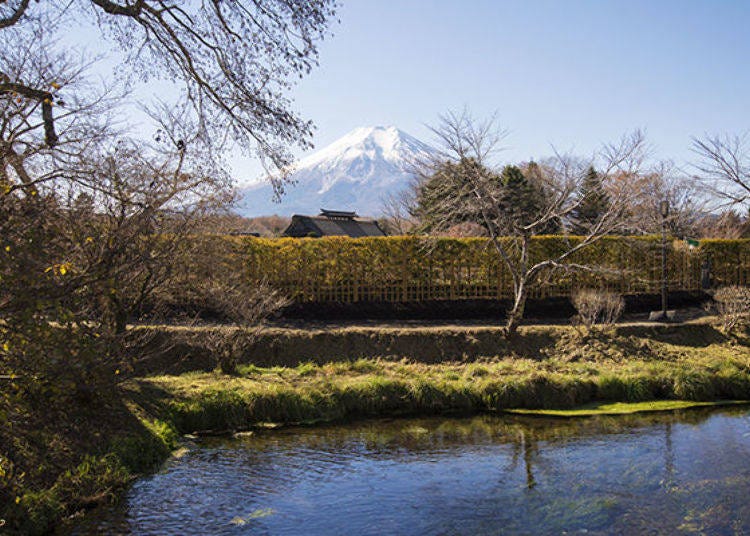
- In bloom: Mid- to late April
- Flowers: Cherry blossoms (Somei-Yoshino), Daffodil, Forsythia
-
Oshino-mura Omiyabashi no Sakura忍野村「お宮橋」の桜
- Address Omiyabashi, Shibokusa, Oshino-mura, Minamitsuru-gun, Yamanashi, 401-0511
- Phone Number 0555-84-3111
・Light-up period: 10 days from the first blossoming of Somei-Yoshino cherry trees.
・Light-up time: From sunset to 9 PM (scheduled)
3. Kawaguchiko Music Forest Museum: A Rose Garden Straight Out of a European Fairytale
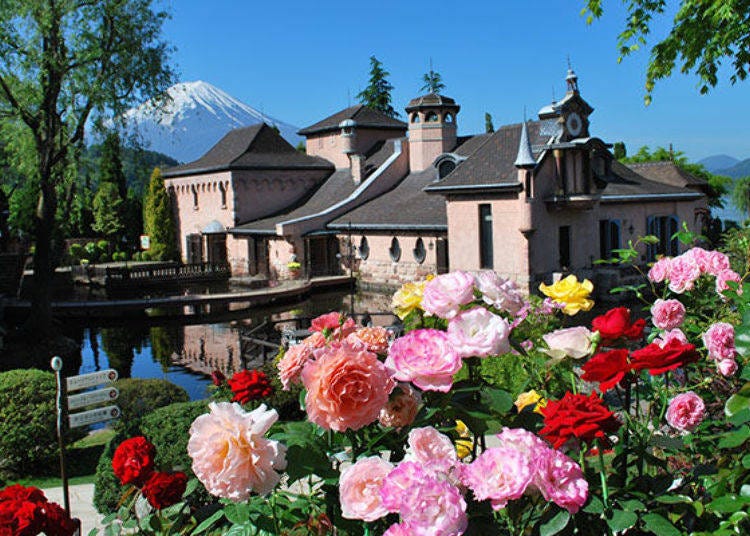
The Kawaguchiko Music Forest Museum is a magical mix of flowers and music, located on the north shore of Lake Kawaguchi. This gorgeous garden, often spotted in music videos and various productions, feels like it’s straight out of a storybook—think European fairytale vibes. The flowers start showing off their colors around March, making the place even more enchanting.
But the real showstopper is the rose garden. With 720 different kinds of roses, it's absolutely a must-see in June. Imagine 1,200 roses blooming all over—on flower beds, arches, and walls. It's a feast for the eyes and definitely a highlight for anyone visiting. You won’t want to miss it; it’s like stepping into a floral wonderland!
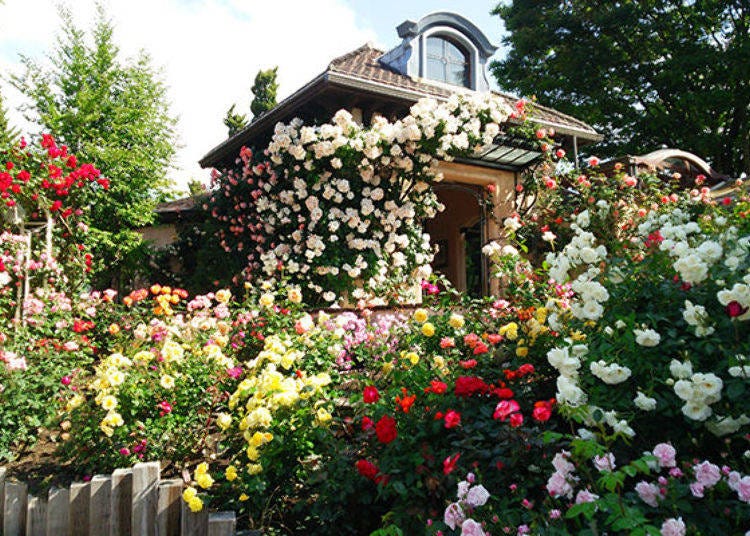
On top of its floral charm, the Kawaguchiko Music Forest Museum boasts an impressive collection of automatic musical instruments, antique music boxes, and mechanical dolls that take you back in time. One of the standout pieces is a grand organ that was originally intended for the Titanic—how cool is that?
To add a sprinkle of extra magic to your visit, you can dress up in fairytale-inspired European costumes with a plan starting at 2,000 yen for adults and 1,000 yen for kids, tax included. Slip into the elegant attire of royalty and more! The garden is dotted with plenty of photo-worthy spots that perfectly complement these costumes. Take, for example, the Butterfly Bench—a prime spot for a photo op that’ll make you feel like you’re part of a fairytale.
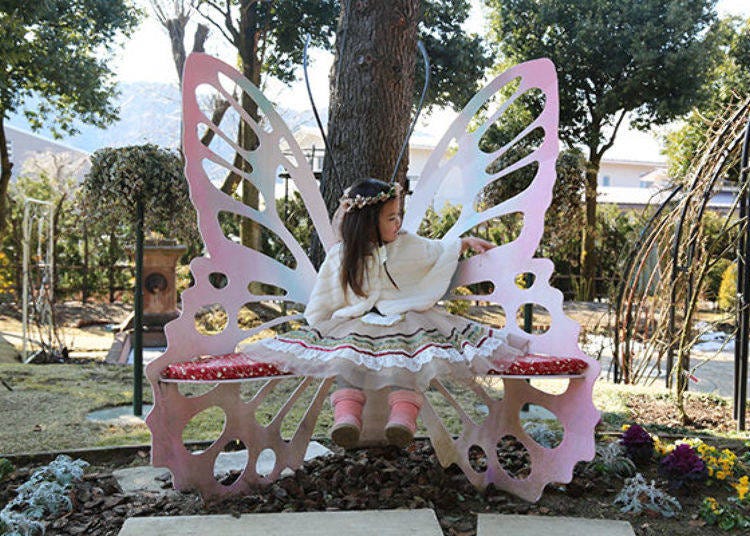
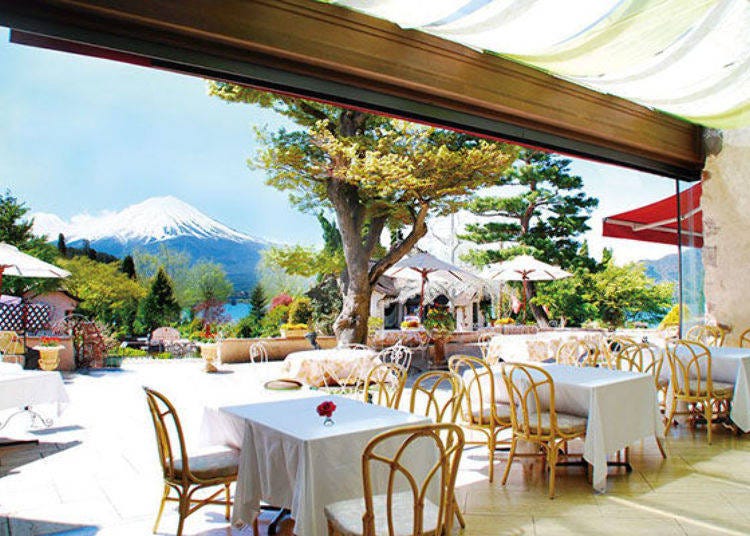
- In bloom: April to November
- Flowers: Roses (~720 varieties), Delphinium, Marigold, Cosmos, Zinnia
-
Kawaguchiko Music Forest Museum河口湖オルゴールの森美術館
- Address 3077-20, Kawaguchi, Fujikawaguchiko-machi, Minamitsuru-gun, Yamanashi 401-0304
- Phone Number 0555-20-4111
・Hours: 9:30 AM – 6 PM (last admission at 5 PM; Changes by season.)
・Admission: Adults (weekdays: 1,800 yen; weekends & holidays: 2,100 yen; peak season: 2,300 yen); College & High School students (weekdays: 1,300 yen; weekends & holidays: 1,600 yen; peak season: 1,800 yen); Elementary School & Junior High students (1,000 yen) (tax included)
・Closed: Winter holidays (please inquire)
4. Oishi Park & Yagizaki Park: Relax With Mt. Fuji and Lavender (Lake Kawaguchiko Herb Festival)
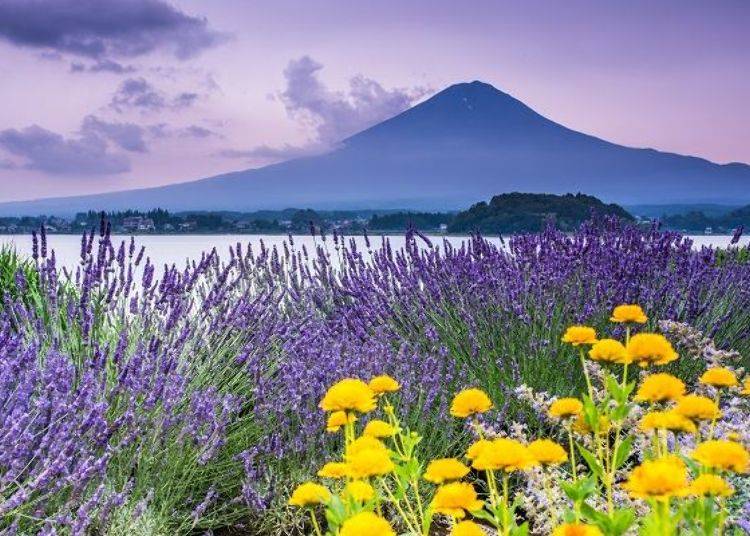
Oishi Park and Yagizaki Park turn into the epicenters of the Lake Kawaguchi Herb Festival, with the former to the north and the latter to the south of the lake. Picture around 8,000 lavender flowers in full bloom, casting a mystical purple hue over the area and filling the air with a soothing scent.
The view from Oishi Park is unbeatable—you've got the serene lake, vibrant lavender, and majestic Mt. Fuji all in one frame. For the best experience, try to get there early on a calm, sunny morning. That's when you can catch the “Upside-down Fuji” effect, with the mountain mirrored perfectly in the lake’s glassy surface.
And there's more: Oishi Park invites you on a 350-meter flower road journey. Beyond the celebrated lavender, you’ll wander through blooms of begonias, set up like cascading waterfalls, and moss phlox. It's a floral adventure that showcases the park's diverse beauty, inviting you to explore and enjoy.
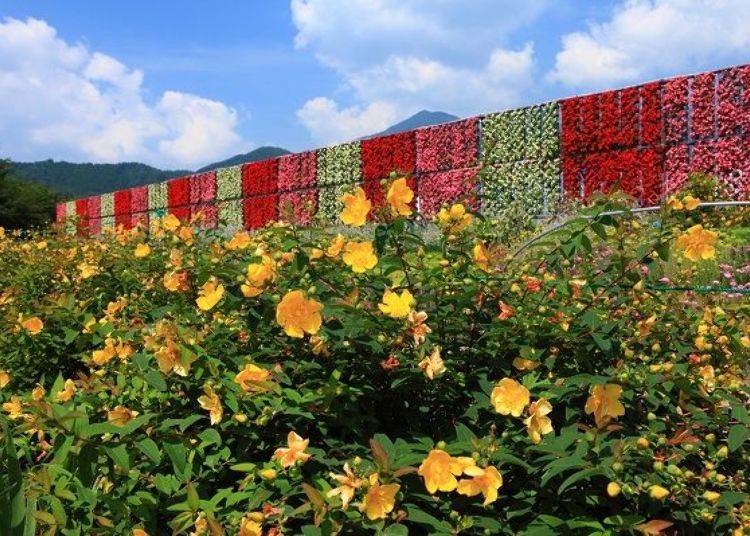
Inside the park also is the Kawaguchiko Natural Living Center with its café called “Café With a view of Mt Fuji,” where Yamanashi peach juice and blueberry soft serve are popular.
The Oishitsumugi Traditional Craft Museum opposite Oishi Park was renewed in 2017 and offers a service called Kimono Kibun, where you can rent and get dressed in a kimono, experiencing Mount Fuji and Lake Kawaguchi’s beautiful scenery, traditional Japanese style! Rental is possible for up to 6 hours and includes accessories such as footwear and handbags (6,000 yen, tax excluded, reservation required).
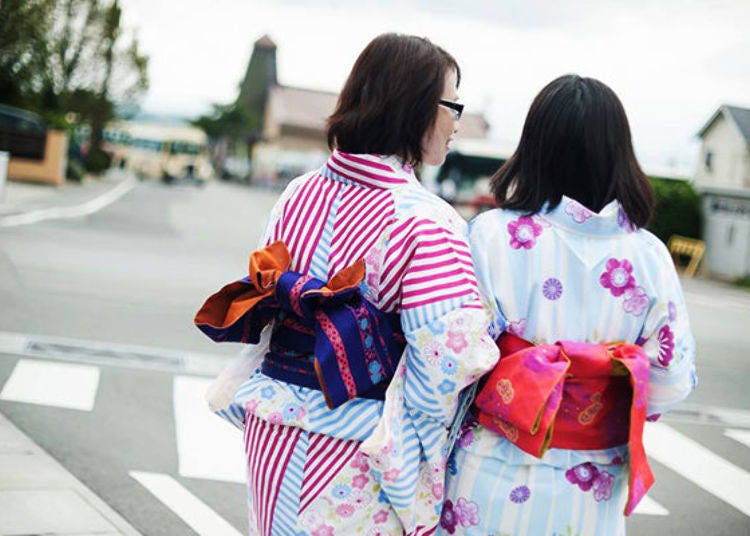
- ・In bloom:
- June to July
- ・Flowers:
- Lavender, Hydrangea, Moss phlox, Begonia, Rape blossoms
-
Kimono Kibun (Oishitsumugi Traditional Craft Museum)キモノキブン(大石紬伝統工芸館)
- Address 1438-1 Oishi, Fujikawaguchiko-machi, Minamitsuru-gun, Yamanashi, 401-0305, Japan
- Phone Number 0555-76-7901
・Hours: 9 AM – 6 PM
・Admission: Kimono rental 6,000 yen (*Requires prior reservation. Return by 5 PM.)
・Closed: Open daily
If you mainly want to sink into a field of lavender, head over to Yagizaki Park on the south side of Lake Kawaguchi. When the wind blows, the gentle aroma is carried all over the field that dyes the lakefront in a stunning purple color.
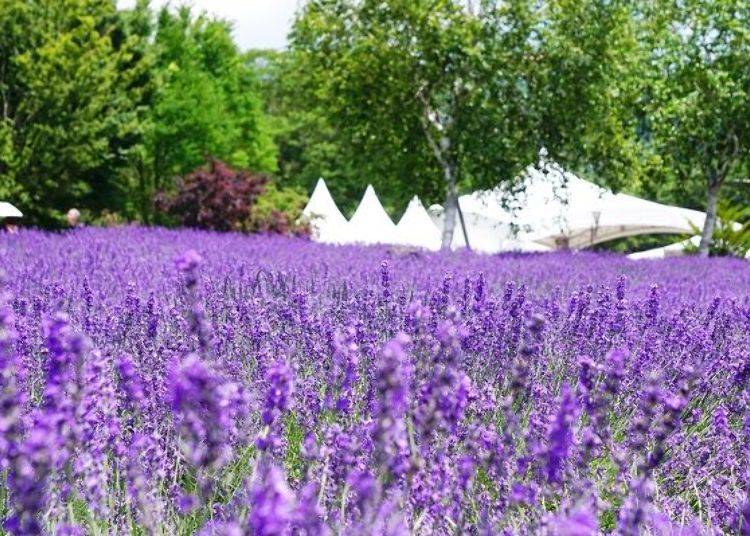
Throughout the festival, the area in front of the lavender garden comes alive with booths and various performances that add to the festive vibe. Imagine being soothed by live jazz music, browsing through herb seedlings for sale, and experiencing the garden's enchanting night-time light-up. It's a perfect escape to relax and let go of your worries.
Don't overlook what Yagizaki Park has to offer either, especially its stunning hydrangeas that bloom alongside the lavender. There’s a gorgeous path bordered by these hydrangeas, leading you right by the lake's edge. It's a scenic route that rivals the lavender fields in beauty, making it a must-see during your visit. The contrast and complement between the hydrangeas and lavender create a visual and aromatic feast that’s truly unforgettable.
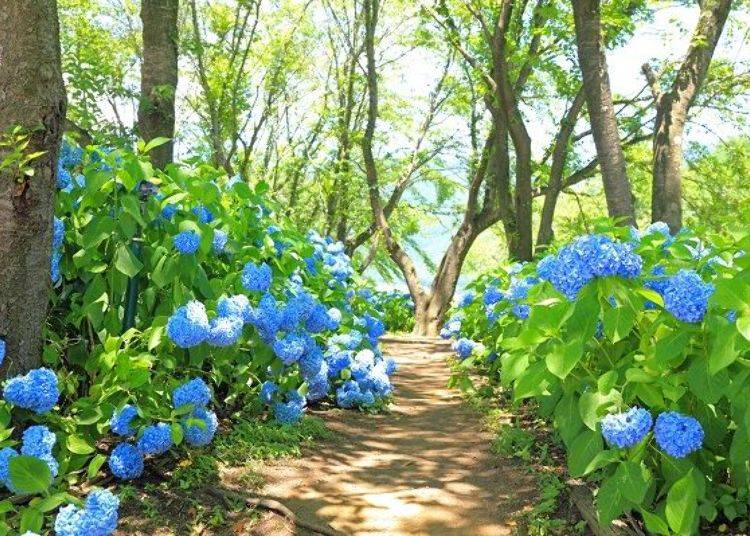
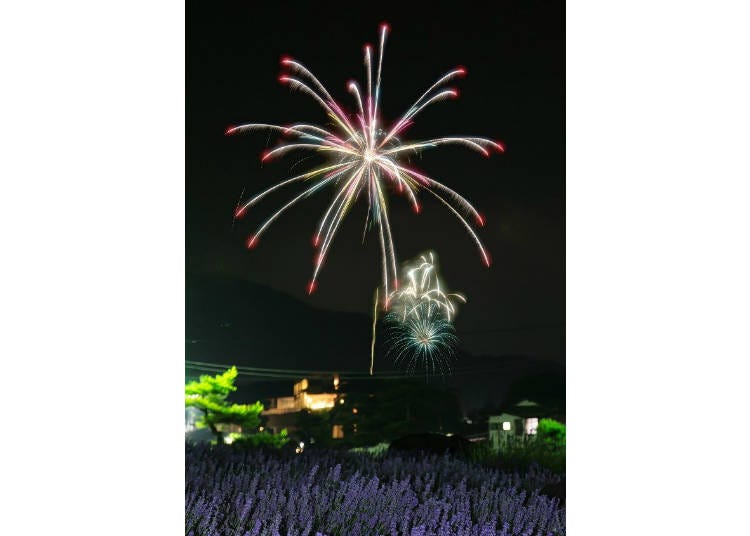
- Event period: June 22 to July 15, 2024
- Hours: 9 AM - 6 PM
- Admission: free
- Venues: Oishi Park, Yagizaki Park
-
Oishi Park大石公園
- Address 2525-11, Oishi, Fujikawaguchiko-machi, Minamitsuru-gun, Yamanashi 401-0305
-
Nearest Station
Near the Kawaguchiko Sightseeing Bus Red Line Kawaguchiko Natural Living Center bus stop (around 30 minutes from Kawaguchiko Station)
- Phone Number 0555-72-3168
-
Yagizaki Park八木崎公園(河口湖ハーブフェスティバル)
- Address 923, Kodachi, Fujikawaguchiko-machi, Minamitsuru-gun, Yamanashi, 401-0302
-
Nearest Station
Near the Kawaguchiko Sightseeing Bus Green Line Yagizaki Koen bus stop (around 20 minutes from Kawaguchiko Station)
- Phone Number 0555-72-8772
5. Yamanakako Hananomiyako Park: Gorgeous Views of Mount Fuji and a Lush Flower Garden
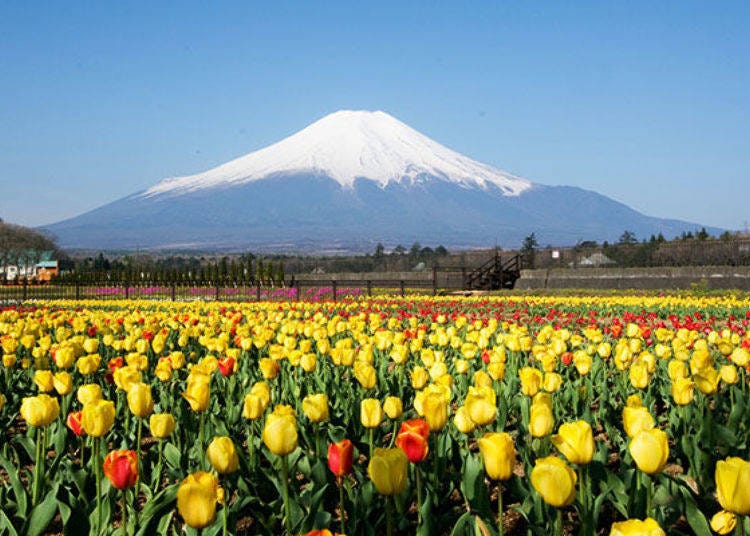
The “Haru no Ibuki” (Breath of Spring) event typically takes place at this park from around April 28 to May 27. The indisputable highlight is the about 170,000 tulips that are in full bloom during this time, creating a carpet of color that makes for stunning pictures.
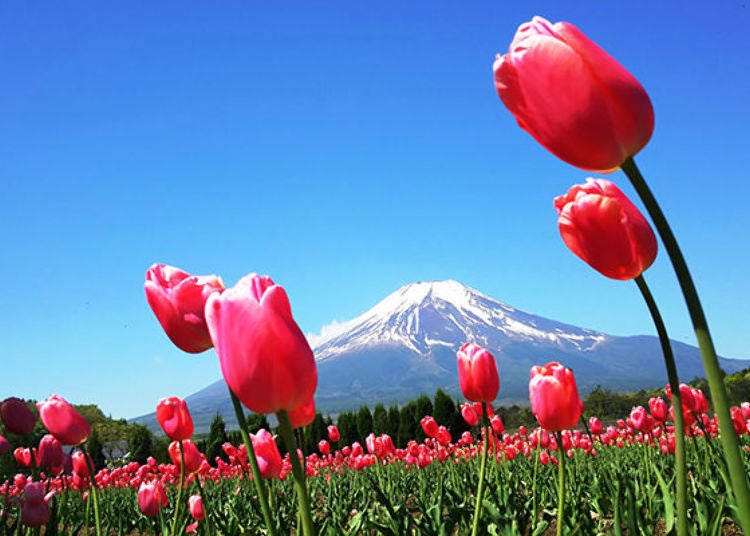
Baby blue eyes, as well as the yaebeni-shidare and the Fujizakura cherry blossoms also show their floral magic. For the event, a special tour will take you to see the orchid Japanese cypripedium, an endangered species.
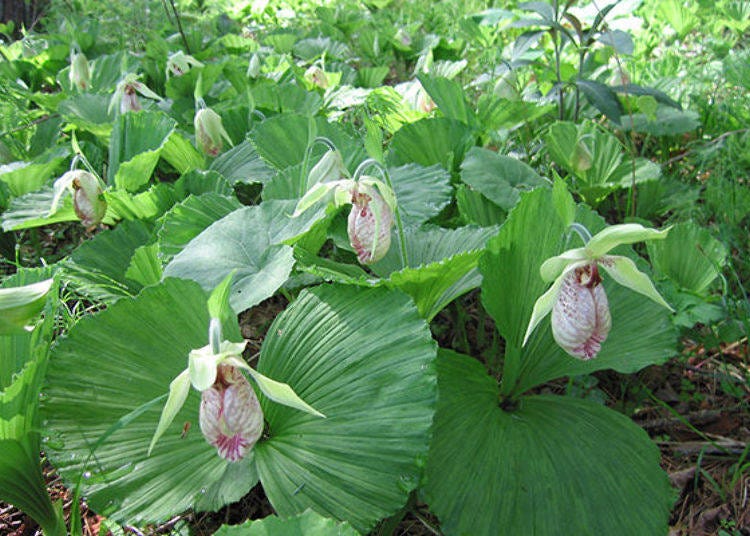
The restaurant “Hana’an” will tickle your taste buds with the Kōshu specialty “hōtō,” a noodle hot pot with flat udon. Here, the regional delight is enhanced with wine, unfolding the secret taste of the region (1,300 yen, tax included). From April, chilled hōtō called “ozara” is also served, cooling you down on a hot day.
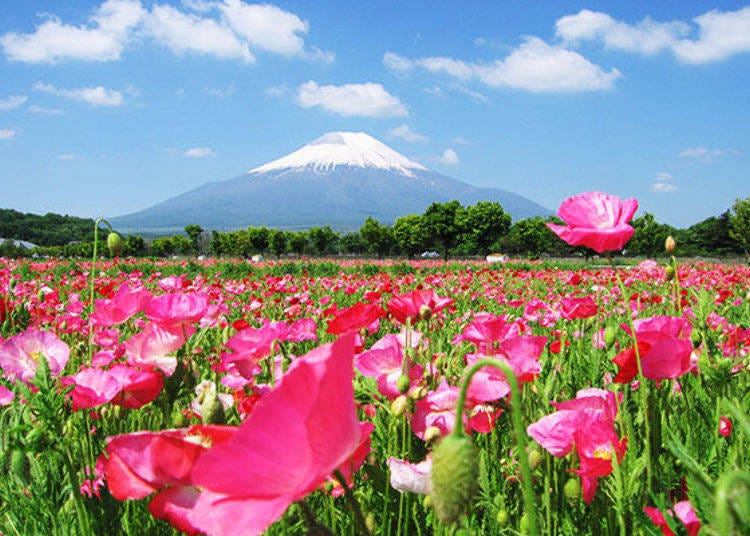
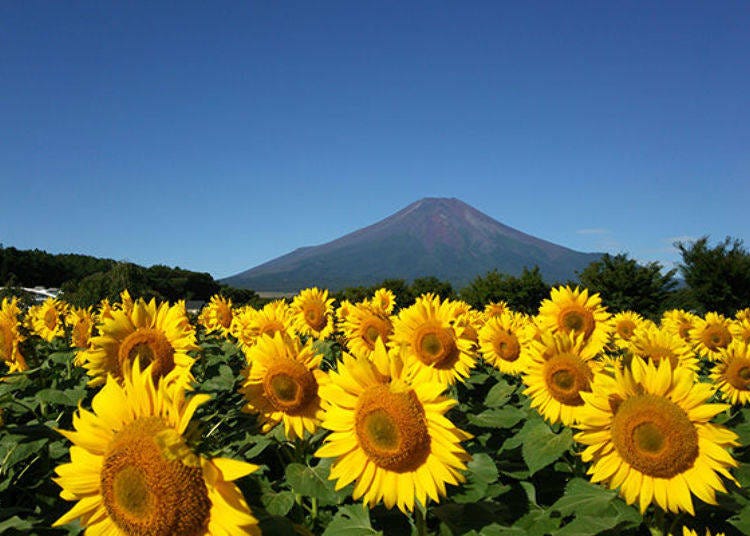
Before planning your trip, check the official website to see in which state the flowers are, as it features live images of both the flowers and Mount Fuji.
- In bloom: Late April to mid-October
- Flowers: Tulips, Rape blossom, Sunflowers, Poppy, Zinnia, Japanese Cypripedium
-
Yamanakako Hananomiyako Park山中湖花の都公園
- Address 1650, Yamanaka, Yamanakako-mura, Minamitsuru-gun, Yamanashi, 401-0501
- Phone Number 0555-62-5587
・Hours: April 16 to October 15: 8:30 AM – 5:30 PM (last entry at 5 PM); October 16 to April 15: 9 AM – 4:30 PM (last entry at 4 PM)
・Closed: Every Tuesday from December 1 to March 15 (except for year-end and New Year holidays)
・Admission: Adults 360-600 yen; Children: 150-240 yen (depends on season; see official website for details)
As the days get warmer and warmer, a bit of snow is left on Mount Fuji’s peak, between the 7th and 8th station. That speck of snow looks like a bird and is called “nōtori,” heralding the arrival of spring.
That’s precisely the time when numerous flowers start to bloom at the foot of Mount Fuji, attracting people from far and wide to shake off the cold of winter and rejoice in the colorful, fragrant flower fields.
The Fuji Five Lake area is about 90 minutes away from Central Tokyo, close enough for a day trip to welcome spring in the most magnificent way! So, what are you waiting for?
(*Dates indicated above are for 2024. Pictures are of 2016 and earlier. The blossoming times given for the flowers is a rough guide only, and actual blossoming varies by weather conditions. Make sure to check the official websites of the locations for further information.)
Accommodations near Mt. Fuji
-

-
Address
Katsuyama 511, Fujikawaguchiko, Yamanashi, 401-0310
View Map -
Nearest Station
Kawaguchiko Station (Kawaguchiko Line (Fujikyuko))
47 minutes on foot
Vacancy search, reservation
-
from 25,290JPY 1room, 2adults
Check with our partner site as the latest rates, rate details, and guest room requirements may vary.
-
Address
Katsuyama 511, Fujikawaguchiko, Yamanashi, 401-0310
-

-
Address
Kawaguchi 2395, Fujikawaguchiko, Yamanashi, 401-0304
View Map -
Nearest Station
Kawaguchiko Station (Kawaguchiko Line (Fujikyuko))
Vacancy search, reservation
-
from 41,431JPY 1room, 2adults
Check with our partner site as the latest rates, rate details, and guest room requirements may vary.
-
Address
Kawaguchi 2395, Fujikawaguchiko, Yamanashi, 401-0304
-

-
Address
1360-83 Yamanaka, Yamanakako-mura, Minamitsuru-gun, Yamanashi, 401-0501
View Map -
Nearest Station
Fujisan Station (Otsuki Line (Fujikyuko) / Kawaguchiko Line (Fujikyuko))
-
Address
1360-83 Yamanaka, Yamanakako-mura, Minamitsuru-gun, Yamanashi, 401-0501
-

-
Address
2654 Arakura, Fujiyoshida-shi, Yamanashi, 403-0011
View Map -
Nearest Station
Fujikyu-Highland Station (Kawaguchiko Line (Fujikyuko))
6 minutes on foot
-
Address
2654 Arakura, Fujiyoshida-shi, Yamanashi, 403-0011
- Area
- Category
*Prices and options mentioned are subject to change.
*Unless stated otherwise, all prices include tax.
Recommended places for you
-

BicCamera Coupon! Tax-free, Plus Discount!
-

Experience the Magic: Mt. Fuji and Lake Kawaguchi Fireworks Festival (August)
-

Tokyo Summer Festivals: Bon Odori, Digital Festivals, and Theme Park Events for August 2024
-

Top Tips for Tourists! Roppongi Project for Safety and Peace of Mind: Creating a Fun and Safe Roppongi for All
-

[Taste Test!] A New Product in the Popular 'Pikachu Tokyo Banana' Series! Adorable Special Cans Now Available
-

Shinjuku Shopping Guide: 15 Must-Visit Stores for Exclusive Deals in Tokyo
Inspiration for Accommodations
-

10 Asakusa Hotels Featuring Views of Tokyo Skytree®
-

8 Scenic Hakone Lodgings with Breathtaking Views of Mount Fuji from Your Room
-
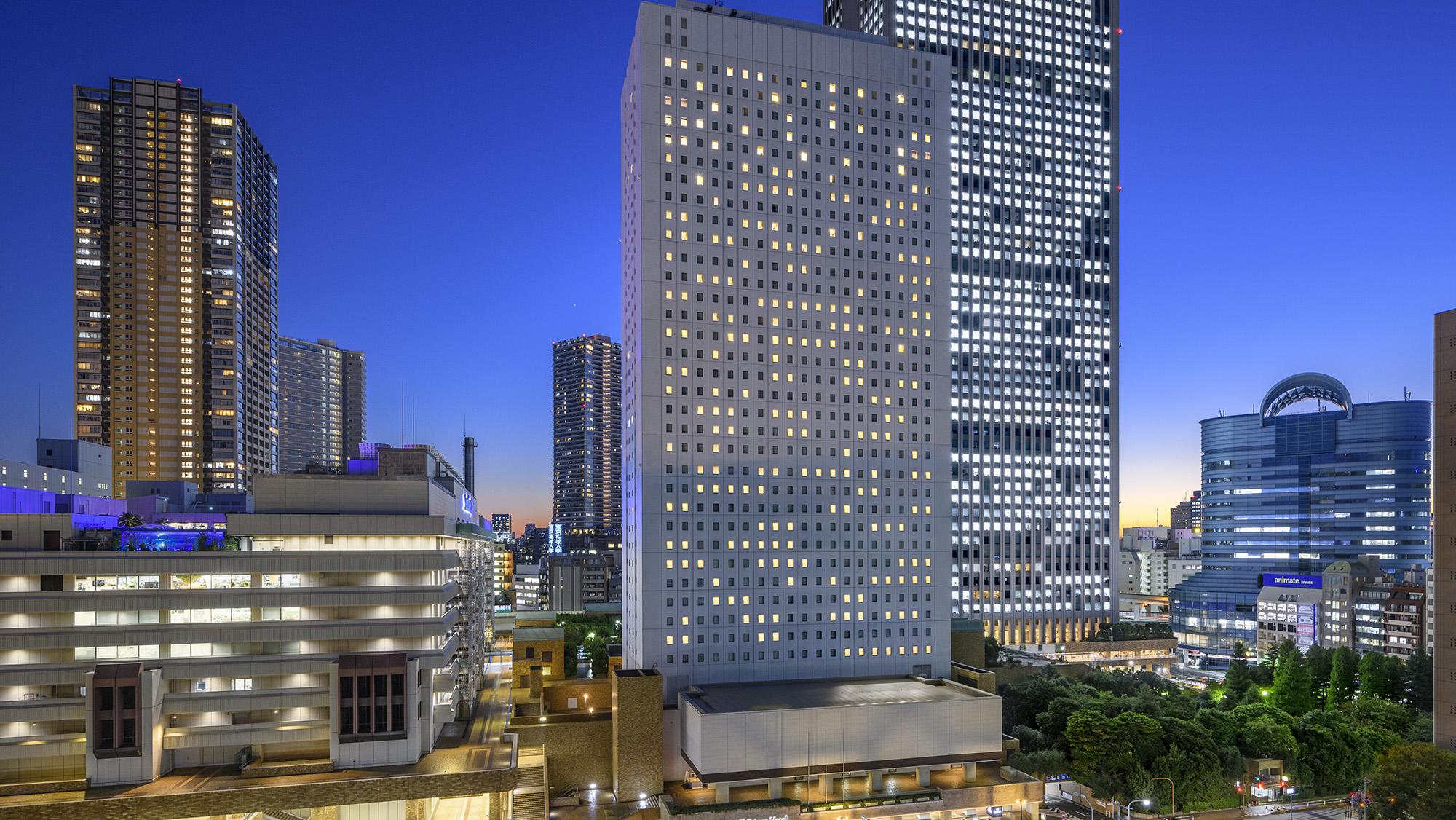
Make Your Tokyo Stay Comfortable! 10 Convenient Hotels with Airport Shuttle Service
-

10 Open-air bath Onsen Ryokans in Hakone for Ultimate Relaxation
-

10 Family-Friendly Hotels with Comfortable Family Rooms in Asakusa
-

Asakusa's Comfortable Long Stay Hotels: 10 Picks with Complete Kitchens
-

Experience Luxury: Hakone's 10 Best Five-Star Accommodations
-
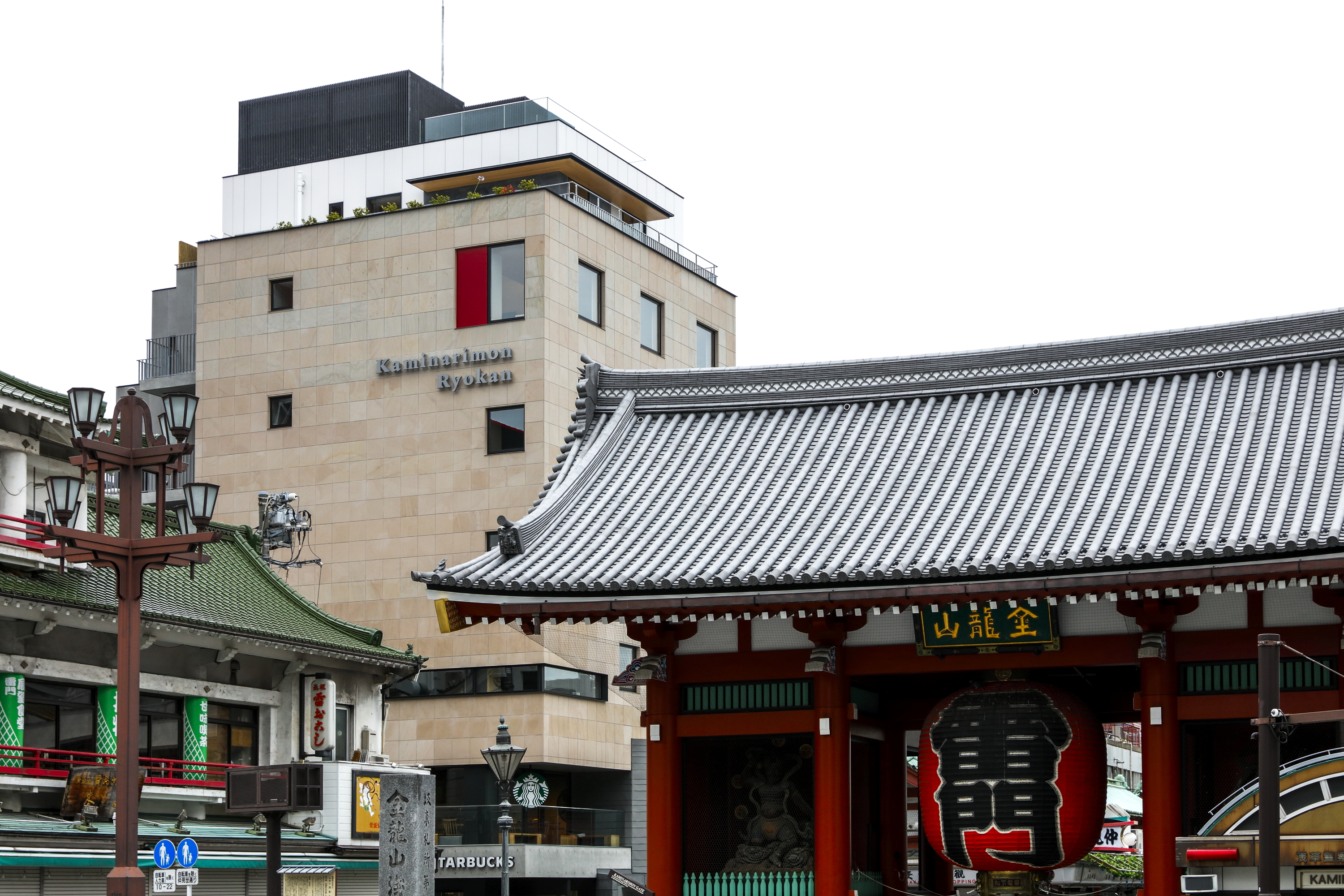
Best Picks for Hotels Near Asakusa Station – Top 10 List
-
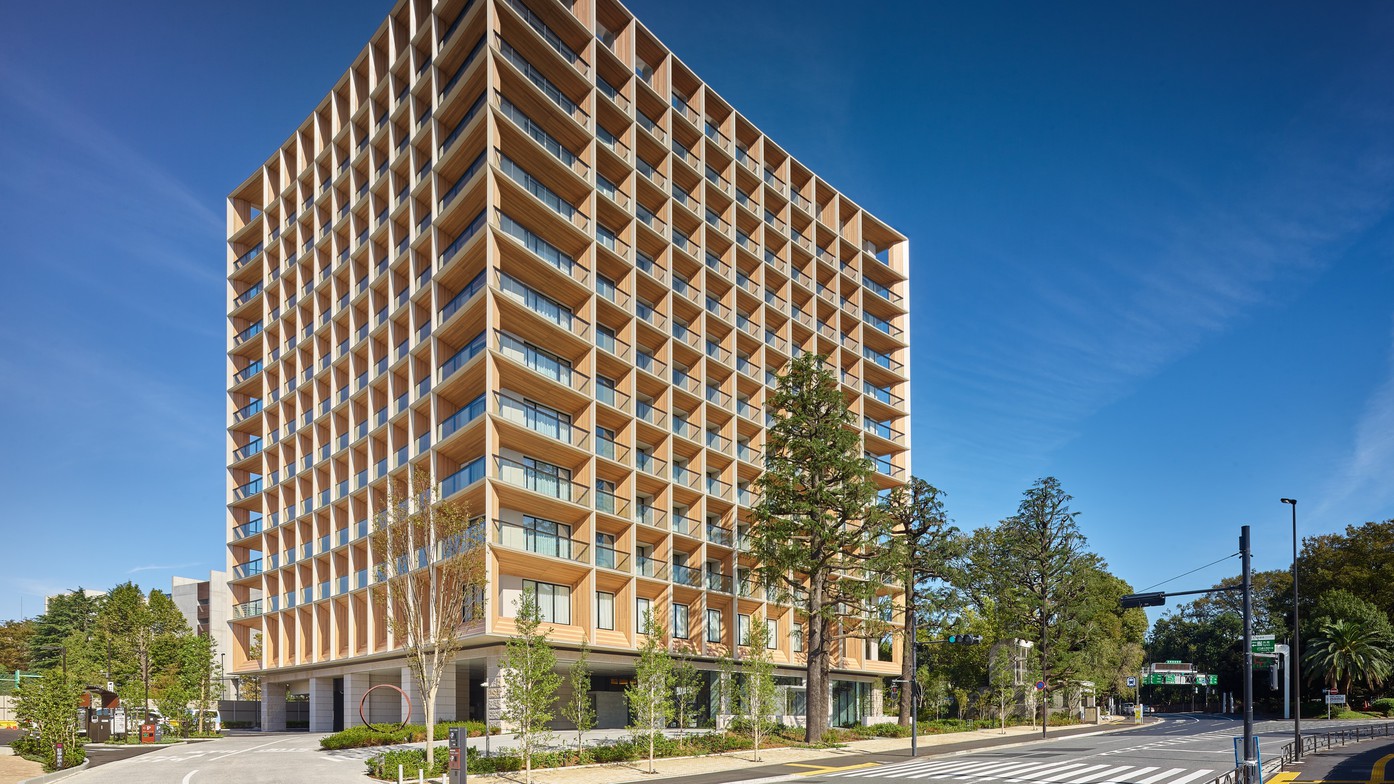
10 Best Hotels in Tokyo with Gyms for a Comfortable Workout Experience
-

Enjoy a Comfortable Stay!10 Concierge Service Hotels in Hakone
-

Atami 1-Day Itinerary: Exploring Japan's Castle & Hot Springs Resort Town Near Tokyo!
-

Autumn Vibes in Aoyama: How Tokyoites Chill
-

Numazuko Kaisho in Ueno: Good Quality, All-You-Can-Eat Seafood for Just US$12!?
-

What to Do if a Typhoon Hits During Your Trip to Japan? (Tips and Precautions)
-

JR Tokyo Wide Pass: The One Rail Pass to Sightsee in Tokyo and Beyond (+4 Bonus Sample Itineraries)
-

Japan's Bath Culture: Tips You Should Know!
- #best ramen tokyo
- #what to buy in ameyoko
- #what to bring to japan
- #new years in tokyo
- #best izakaya shinjuku
- #things to do tokyo
- #japanese nail trends
- #what to do in odaiba
- #onsen tattoo friendly tokyo
- #daiso
- #best sushi ginza
- #japanese convenience store snacks
- #best yakiniku shibuya
- #japanese fashion culture
- #best japanese soft drinks













